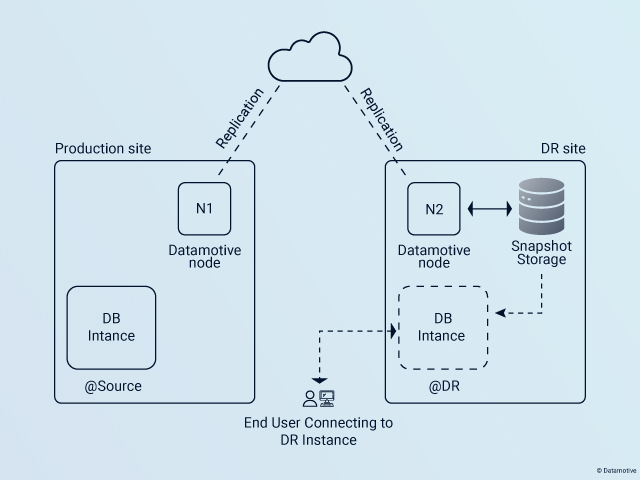In the fast-paced world of technology, downtime can be catastrophic for businesses relying on their databases. Oracle databases, being a cornerstone of many enterprises, require robust disaster recovery plans to ensure minimal disruption in the event of unforeseen circumstances. This technical guide aims to walk you through the process of recovering an Oracle database in less than 10 minutes on any choice of cloud, helping you mitigate downtime and ensure business continuity.
Understanding the Basics:
Before delving into the recovery process, it's crucial to have a solid understanding of Oracle's architecture and the components involved in disaster recovery:
- Oracle Database Architecture: Oracle databases consist of various components, including data files, control files, redo logs, and archived redo logs. Understanding these components is essential for efficient recovery.
- Redo Logs and Archive Logs: Redo logs record changes made to the database, while archive logs provide a historical record of these changes. Both are critical for recovery and maintaining data integrity.
Preparation:
Create a recovery plan to protect the database instances in case of a disaster event to bring them up in the secondary site with an RTO SLA of 10 minutes.
Test Recovery Procedures:
- Regularly test your recovery procedures to ensure they work as expected. This includes both full and incremental backups, as well as recovery scenarios for different types of failures.
- Maintain Redo Logs and Archive Logs: Monitor and manage your redo logs and archive logs effectively to ensure you have a complete set of logs for recovery purposes.
Recovery Process:
Assuming a scenario where the primary database has encountered a failure and needs to be recovered in less than 10 minutes, follow below steps:
- Assess the Situation: Determine the nature and extent of the failure. Is it a hardware failure, software error, or a data corruption issue?
- Simulation exercise: A simulation attempts to mimic a real-world disaster scenario as closely as possible. It can validate whether your Oracle database disaster recovery team can restart the necessary hardware and software in sync with the RTO timeline and whether your redundancy, and/or failover systems work as expected. Datamotive provides non-intrusive DR drill feature for the same where workloads can be recovered in a sandbox network environment.
- Verify Recovery: After the recovery process is complete, perform thorough verification to ensure that the database is functioning correctly. Test critical applications and run integrity checks to confirm data consistency.
- Communicate: Keep stakeholders informed throughout the recovery process, providing updates on progress and expected downtime. Transparency is key to maintaining trust and confidence during critical situations.
Conclusion:
Recovering an Oracle database in less than 10 minutes requires careful planning, proactive maintenance, and efficient execution of recovery procedures. By understanding Oracle's architecture, implementing robust strategies, and practicing regular testing, organizations can minimize downtime and ensure business continuity in the face of disasters. Remember to adapt these guidelines to your specific environment and regularly review and update your disaster recovery plans to stay prepared for any eventuality.
